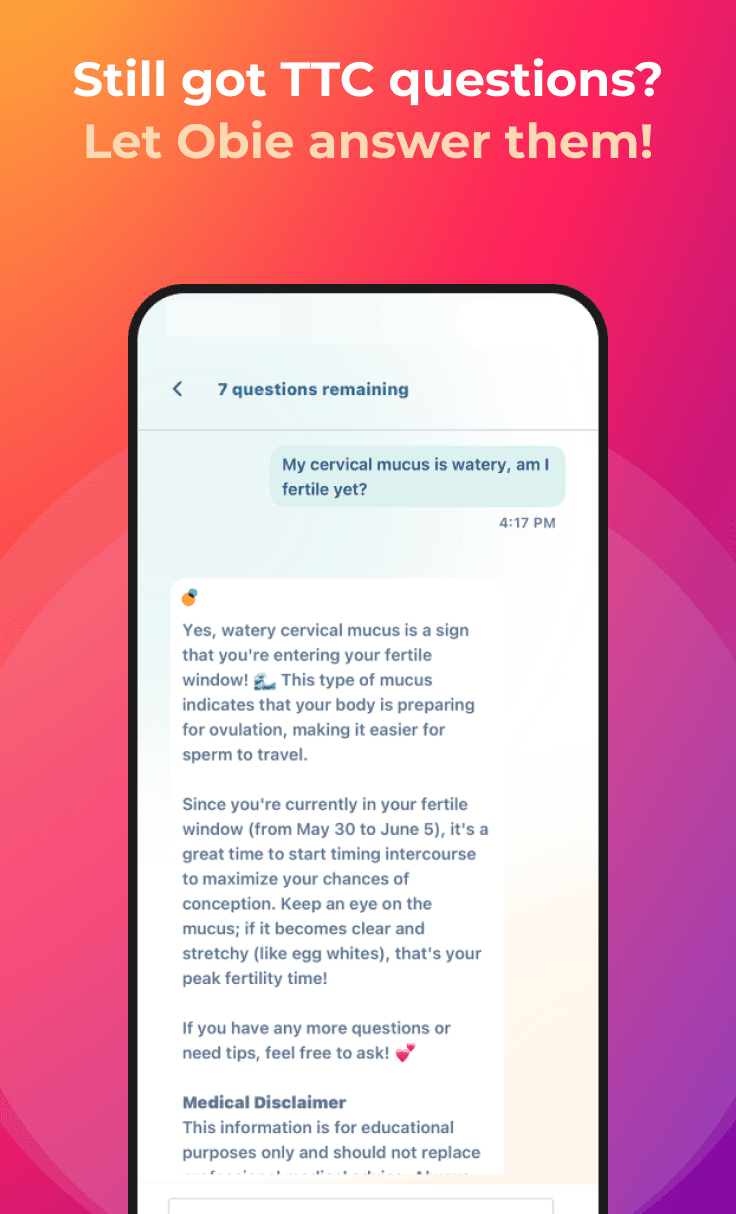Implantation Timing: When Does Implantation Happen?
Implantation
Obie Editorial Team

What is implantation?
Implantation is when the fertilized egg arrives inside the uterus after having traveled through the fallopian tube and then attaches or implants to the lining of the uterus. One of the most interesting questions in early pregnancy is when exactly does implantation happen? Implantation happens on average 9.1 days after ovulation and fertilization with a range of 6-12 days (based on a study published in 1999 by Wilcox).
What happens before implantation?
When ovulation happens, when the egg is ejected from the ovary, it can join with sperm and become fertilized usually within 12-24 hours after ovulation.
As soon as fertilization happens, the freshly fertilized egg or embryo starts to divide and is called a zygote. It then starts traveling through the fallopian tube to the uterus where it usually arrives about 5-6 days after ovulation/fertilization.
As the embryo travels down the fallopian tube, it increases its size along the way. In the fallopian tube, it first becomes the "zygote" and doubles to two cells, four cells, then eight cells and becomes the "morula." As the morula enters the uterine cavity it's called a "blastocyst."
Implantation happens when the fertilized egg or embryo (blastocyst) attaches to the uterine wall and starts producing the pregnancy hormone hCG.
Day 1-3 after fertilization
After the first 24 hours, (Day 1) the embryo has divided into 2 cells. By Day 2 the embryo has 4 cells (blastomeres) and by the third day, there are usually between 6 and 9 cells. Up to that point, embryonic development is under the control of maternal genes in the egg. Around the 8 cell stage, the embryo’s own genes (embryonic genome) begin to take over control of development.
Day 4-6 after fertilization
By the fourth day, the embryo has between 16 and 32 cells. At this point, it looks like a mulberry and is called a morula. By day 5 post-fertilization, differentiation of the embryo begins. A fluid-filled cavity (blastocele) forms in the center of the conglomerate of blastomeres. This blastocele will eventually become the amniotic sac and the fluid surrounding the conceptus in the uterus. The cells around the outside of the morula develop into the trophectoderm, which will eventually form the placenta and fetal membranes, while the cells on the inside of the morula aggregate and group together to form the inner cell mass, which ultimately develops into the fetus. This complex creation is now called a blastocyst. As the blastocele fills with fluid, the blastocyst expands, its walls thin out and it eventually breaks through (hatches) its envelopment (zona pellucida).
Implantation happens in most pregnancies 8-10 days after fertilization
In 84% of pregnancies, implantation happened between days 8 and 10 after ovulation. There was an increase in miscarriages when implantation happened later. The rate of early pregnancy loss was 13% when implantation happened by day 9, it rose to 26% with implantation on day 10 after ovulation, it rose to 52% if implantation was on day 11 after ovulation, and to 82% if implantation was later than 11 days after ovulation.
Literature: Time of Implantation of the Conceptus and Loss of Pregnancy; Allen J. Wilcox, M.D. et.al. NEJM Volume 340:1796-1799








